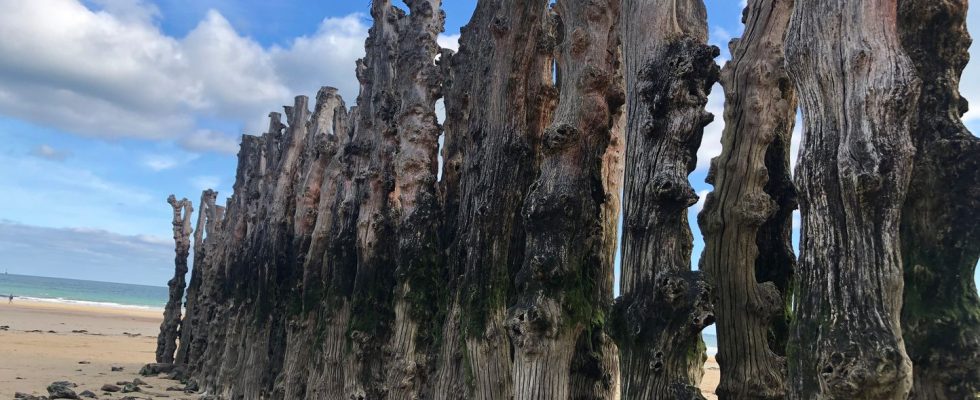They have been planted in the sand of Sillon beach for almost two hundred years. In Saint-Malo, the breakwaters are part of the landscape. Whether they are drowned in the swell at high tide or with their feet dry when the sea recedes, these wooden trunks play a key role in protecting the Saint-Malo coastline. Shaken by successive storms, the dike must regularly be repaired and the stones replaced. The breakwaters too. At the end of 2021, a thousand of the 3,000 piles installed by the Ponts et Chaussées had been removed. Half had been resurfaced to be replanted. However, around 500 trunks deemed too damaged had to be retired. For more than two years, they have been stored while waiting to know how they will be eaten.
The mayor of Saint-Malo Gilles Lurton knew he was going to be asked the question. “I suspected we were going to talk about breakwaters. My answer will disappoint you… We haven’t really made any progress. »
Where are they stored? “I won’t tell you”
Since his town inherited the 500 trunks that the State was to give to it free of charge, the president has been desperately looking for a solution. He has already received a promise that the stakes will not be burned as was originally planned. But he still doesn’t know what will become of them. “It’s very complicated legally. Today, we store them free of charge but we need to find a solution,” replies Gilles Lurton. Where are they hiding? “On city land, but I won’t tell you where,” the mayor slips with a smile.
If the chosen one prefers to keep the secret, it is because his breakwaters arouse envy. Since the announcement of their withdrawal, many residents have expressed their interest.
Some hoped to turn it into a work of art, but the issue of copyright is not easy to manage. Others are calling for the organization of a major auction. “This is what we want to do but there is a legal procedure to follow. That’s what’s complicated. But we will get there,” promises the mayor. The difficulty is that the use of the money collected will be very regulated and must contribute to the restoration of heritage. The advantage is that in Saint-Malo, there is plenty to do.

